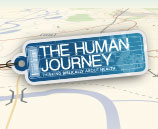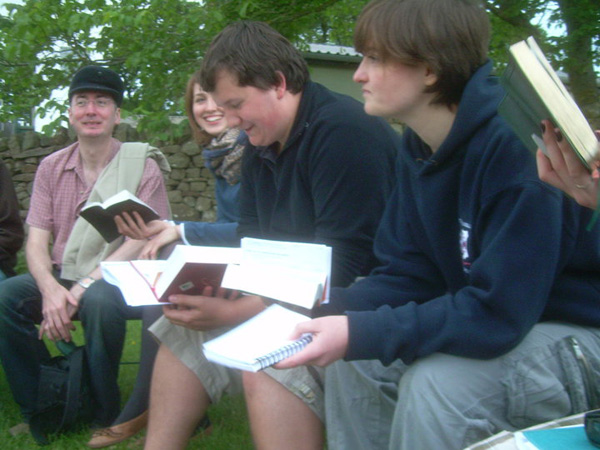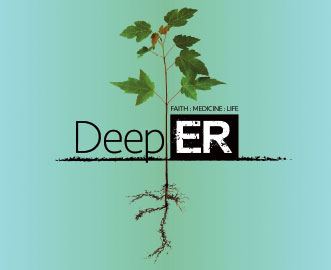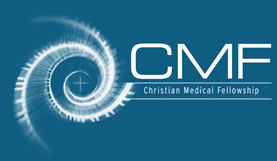I spent six weeks at Laigadh Leprosy Services Centre in the Southern Terai of Nepal. This is the flattest area of Nepal and also one of the hottest. It was the pre-monsoon season. We were rewarded with some of the most spectacular storms I have ever seen which cleared the air on several occasions.
It is run by the Nepal Leprosy Trust (NLT), which is a small Christian organisation that aims not only to treat leprosy, but also to empower those affected by the disease to participate with equality and dignity in their own communities. For a small organisation it does incredible work.
Laigadh Hospital was officially opened in 1996. Many of the staff had personal experience of leprosy, either themselves or within their families.
Nepal is one of the ten poorest countries in the world. The illiteracy rate is 70%. Many health problems were encountered simply because of a lack of clean water. The average weight of a Nepali man was 45Kg and to be above this meant you were very wealthy and greatly admired. It took me a while to get used to being told I was very fat and accepting it as the compliment it was intended to be. Nepali people are very frank, which in many ways was quite refreshing. Women in Nepal run their homes, collect firewood, look after the children, do much of the farming and walk many miles to the markets to sell their produce. In contrast the men were usually to be found sitting around in roadside cafes chatting and drinking chiya (tea). Many men worked away from home leaving their wives and children alone for many months at a time.
The housing was basic - mud or concrete huts being the standard accommodation. There would be two rooms at most. Despite all this the people always had a smile on their face. There was a big community feel to every village I visited. Children walked in and out of all the houses. The family is the central part of life in Nepal and extended families all living in one house is the norm. We were invited into the houses of complete strangers and could never leave without having something to eat and drink and a tour of the house. It is this openness and kindness of Nepali people that will be one of my lasting memories of the trip.
The hospital was an incredibly beautiful place. It was set in its own compound with colourful trees and flowers. It was very busy, despite having just 54 beds. The bulk of work was done through Outpatients, which saw an average of 180 patients a day.. Between 4 and 8 new cases of leprosy were diagnosed each day, figures which have not decreased significantly in the past few years despite the WHO target to eliminate leprosy by the end of 2001. I learned that there are many more years to go before this is achieved in Nepal and also that the definition of "cure" in a medical sense is far from being cured in the eyes of the patient. If leprosy transmission is eliminated there will be many people left with the long-term disabilities and to them and the society around them they are still clearly suffering from the disease.
Outpatients took place on the veranda of the hospital. It was chaotic but maintained a very laid-back atmosphere, a feature of Nepali life in general. There were three ex-pat doctors at the hospital and the rest of the staff were Nepali with a wide variety of training and xperience. The approach was multi-disciplinary and holistic approach with physiotherapy, podiatry, wound-care, social work and pharmacology. Patients could spend a whole day going through the different departments.
There is still a lot of ignorance about the disease, even amongst doctors. Until the message gets through that most people with leprosy are not contagious and have done nothing themselves to cause the disease, patients will continue to battle with its psychological consequences.
The inpatients had more extensive leprosy complications. The wards had sparse furnishing and decoration and no high-tech equipment but nurses and patients seemed to get on well. Only a few of the patients would be seriously ill with infection or immune reactions to the leprosy bacteria, and the rest would be up and about, hobbling on their ancient crutches or clanging around in plaster casts. Until recently some of the inpatients would have also been admitted for reconstructive surgery to correct some of the leprosy deformities. This was some of the most incredible and ingenious surgery I'd ever seen. The service has since been discontinued as the surgeon returned to England. He had come there after retiring from Barnsley Hospital in England and was a great man but at the age of 71 decided it was time to retire.
The other important part of the hospital was the self-care training unit, the first of its kind in Nepal. It aimed to teach people with leprosy how to manage their condition themselves. For example they found it hard to continue their regular foot soaking because they couldn't afford bowls. Lining a hole dug in the ground with cheap plastic sheeting and filling it with water meant they could continue. Trainees stayed there two weeks and lived in basic dormitories being totally responsible for their own care. They learned about safe cooking, in the village style kitchen with open fire and safe farming to avoid damage to anaesthetic hands and feet. There were daily physiotherapy sessions to teach exercises that could be repeated at home and discussion groups to share their experiences. People going to the unit were half as likely to need admission to the wards for ulcers and disabilities.
Two field visits in a rather old Landrover and a dirt track were white-knuckle experiences. After an hour we found the village and asked one of the villagers where our patient lived. She had an infected ulcer and was admitted. Our little band of spectators watched our every move One of the ladies asked the driver how I was so clean, referring to my white skin which she'd never seen before.
Another trip I made was to a small community of people with the worst leprosy related-deformities I saw during my stay. They were the poorest of the poor and lived in shacks by the side of the road. Several had amputated limbs. The local government wanted to bulldoze the road and were intending to throw the people out of their houses. One of the hospital staff was working hard to provide better care and mediation with officials. The people were poor, even by Nepali standards but again displayed characteristic Nepali hospitality and pulled out blankets from their homes so I could sit down with them.
Laigadh with its Christian basis demonstrates service of God by obedience to his command "love thy neighbour as thyself." About half of the Nepali staff is Christian, including all the senior staff, many of whom had come to know God since working at the hospital. Each morning started with a short Bible reading and explanation. All the staff and many of the patients attended this - an example of the inclusive nature of God's family. West mixed with East, educated with uneducated, able-bodied and disabled, and the smell of mangy, rotting ulcers went unnoticed.
The hospital has faced opposition and the church was burnt down last August. By the time I arrived staff were praising God for the improved relationships with the village. They put everything into God's hand and never doubted that He would work. The joy and enthusiasm in their voices, and eagerness to receive Bible teaching was very humbling. The church building was little more than a few mats on bamboo poles. Hopefully by the time the Monsoon arrives it will be rebuilt. But the work of the church was on display. Many villagers stopped and listened. There was no question of being more secretive in the hope of avoiding further persecution. God is certainly not an English God and to be part of His family of all nations, cultures and languages is a great privilege. He allowed me to learn much, both medically and spiritually and I would love to return for a longer-term stay.
For more info on The Nepal Leprosy Trust, click here.
It is run by the Nepal Leprosy Trust (NLT), which is a small Christian organisation that aims not only to treat leprosy, but also to empower those affected by the disease to participate with equality and dignity in their own communities. For a small organisation it does incredible work.
Laigadh Hospital was officially opened in 1996. Many of the staff had personal experience of leprosy, either themselves or within their families.
Nepal is one of the ten poorest countries in the world. The illiteracy rate is 70%. Many health problems were encountered simply because of a lack of clean water. The average weight of a Nepali man was 45Kg and to be above this meant you were very wealthy and greatly admired. It took me a while to get used to being told I was very fat and accepting it as the compliment it was intended to be. Nepali people are very frank, which in many ways was quite refreshing. Women in Nepal run their homes, collect firewood, look after the children, do much of the farming and walk many miles to the markets to sell their produce. In contrast the men were usually to be found sitting around in roadside cafes chatting and drinking chiya (tea). Many men worked away from home leaving their wives and children alone for many months at a time.
The housing was basic - mud or concrete huts being the standard accommodation. There would be two rooms at most. Despite all this the people always had a smile on their face. There was a big community feel to every village I visited. Children walked in and out of all the houses. The family is the central part of life in Nepal and extended families all living in one house is the norm. We were invited into the houses of complete strangers and could never leave without having something to eat and drink and a tour of the house. It is this openness and kindness of Nepali people that will be one of my lasting memories of the trip.
The hospital was an incredibly beautiful place. It was set in its own compound with colourful trees and flowers. It was very busy, despite having just 54 beds. The bulk of work was done through Outpatients, which saw an average of 180 patients a day.. Between 4 and 8 new cases of leprosy were diagnosed each day, figures which have not decreased significantly in the past few years despite the WHO target to eliminate leprosy by the end of 2001. I learned that there are many more years to go before this is achieved in Nepal and also that the definition of "cure" in a medical sense is far from being cured in the eyes of the patient. If leprosy transmission is eliminated there will be many people left with the long-term disabilities and to them and the society around them they are still clearly suffering from the disease.
Outpatients took place on the veranda of the hospital. It was chaotic but maintained a very laid-back atmosphere, a feature of Nepali life in general. There were three ex-pat doctors at the hospital and the rest of the staff were Nepali with a wide variety of training and xperience. The approach was multi-disciplinary and holistic approach with physiotherapy, podiatry, wound-care, social work and pharmacology. Patients could spend a whole day going through the different departments.
There is still a lot of ignorance about the disease, even amongst doctors. Until the message gets through that most people with leprosy are not contagious and have done nothing themselves to cause the disease, patients will continue to battle with its psychological consequences.
The inpatients had more extensive leprosy complications. The wards had sparse furnishing and decoration and no high-tech equipment but nurses and patients seemed to get on well. Only a few of the patients would be seriously ill with infection or immune reactions to the leprosy bacteria, and the rest would be up and about, hobbling on their ancient crutches or clanging around in plaster casts. Until recently some of the inpatients would have also been admitted for reconstructive surgery to correct some of the leprosy deformities. This was some of the most incredible and ingenious surgery I'd ever seen. The service has since been discontinued as the surgeon returned to England. He had come there after retiring from Barnsley Hospital in England and was a great man but at the age of 71 decided it was time to retire.
The other important part of the hospital was the self-care training unit, the first of its kind in Nepal. It aimed to teach people with leprosy how to manage their condition themselves. For example they found it hard to continue their regular foot soaking because they couldn't afford bowls. Lining a hole dug in the ground with cheap plastic sheeting and filling it with water meant they could continue. Trainees stayed there two weeks and lived in basic dormitories being totally responsible for their own care. They learned about safe cooking, in the village style kitchen with open fire and safe farming to avoid damage to anaesthetic hands and feet. There were daily physiotherapy sessions to teach exercises that could be repeated at home and discussion groups to share their experiences. People going to the unit were half as likely to need admission to the wards for ulcers and disabilities.
Two field visits in a rather old Landrover and a dirt track were white-knuckle experiences. After an hour we found the village and asked one of the villagers where our patient lived. She had an infected ulcer and was admitted. Our little band of spectators watched our every move One of the ladies asked the driver how I was so clean, referring to my white skin which she'd never seen before.
Another trip I made was to a small community of people with the worst leprosy related-deformities I saw during my stay. They were the poorest of the poor and lived in shacks by the side of the road. Several had amputated limbs. The local government wanted to bulldoze the road and were intending to throw the people out of their houses. One of the hospital staff was working hard to provide better care and mediation with officials. The people were poor, even by Nepali standards but again displayed characteristic Nepali hospitality and pulled out blankets from their homes so I could sit down with them.
Laigadh with its Christian basis demonstrates service of God by obedience to his command "love thy neighbour as thyself." About half of the Nepali staff is Christian, including all the senior staff, many of whom had come to know God since working at the hospital. Each morning started with a short Bible reading and explanation. All the staff and many of the patients attended this - an example of the inclusive nature of God's family. West mixed with East, educated with uneducated, able-bodied and disabled, and the smell of mangy, rotting ulcers went unnoticed.
The hospital has faced opposition and the church was burnt down last August. By the time I arrived staff were praising God for the improved relationships with the village. They put everything into God's hand and never doubted that He would work. The joy and enthusiasm in their voices, and eagerness to receive Bible teaching was very humbling. The church building was little more than a few mats on bamboo poles. Hopefully by the time the Monsoon arrives it will be rebuilt. But the work of the church was on display. Many villagers stopped and listened. There was no question of being more secretive in the hope of avoiding further persecution. God is certainly not an English God and to be part of His family of all nations, cultures and languages is a great privilege. He allowed me to learn much, both medically and spiritually and I would love to return for a longer-term stay.
For more info on The Nepal Leprosy Trust, click here.






























